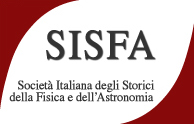Speaker
Description
The origin of Physics teaching in Perugia took place long ago. As early as 1730, the physician and mathematician Virgilio Cocchi held a University physics lecture. In 1759, Perugia’s Studium acquired some physics machines from La Sapienza University in Rome, later used to reproduce some innovative “philosophical experiences”. The priest and philosophy lecturer Luca Antonio Pellicciari oversaw the purchase. Pellicciari had studied in Rome at the school of the Minim Friars Thomas Le Seur and François Jacquier, famous editors and commentators on Newton's works. Thus, he became a professor of experimental physics at the University of Perugia. In May 1763, Pellicciari inaugurated the University's 'Experimental Theatre' (Theatri formam referens) to hold public experiments, disputes, and dissertations on experimental physics. Famous visitors such as Joseph-Jerome Lalande and Johann Bernoulli spread the news about this new teaching and experimental facility, which acquired new equipment over the years. Pellicciari retired in 1799. His pupil Luigi Canali took over the chair of physics, as well as that of chemistry. In the first decades of the 19th century, Canali owned a famous collection of minerals, visited and praised by Georges Cuvier in 1813. The talk will retrace the main historical stages of the birth of experimental physics in Perugia, also linking them to the historical collection of scientific instruments, now preserved at the University's Physics Department.

